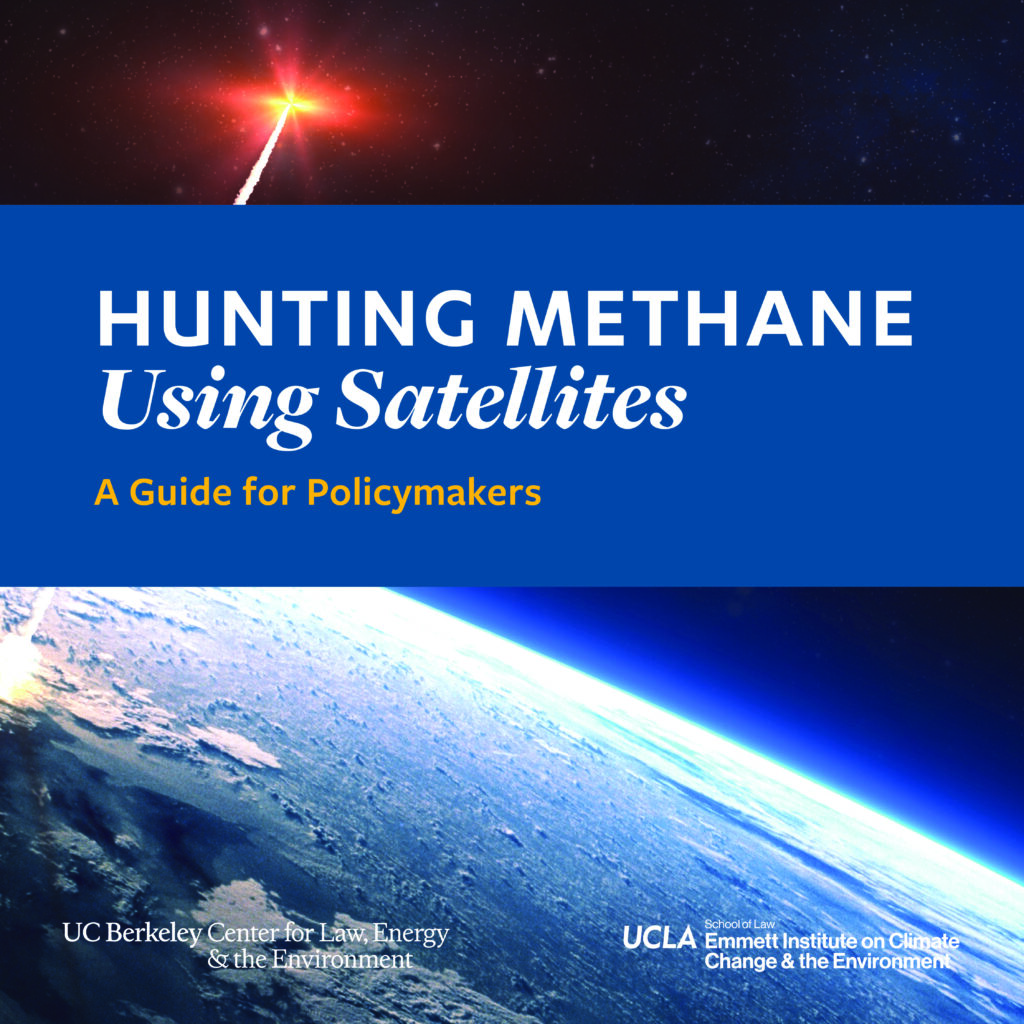Hunting Methane Using Satellites
Joint UC Berkeley – UCLA Law report aims to help policymakers harness the methane data revolution.
A stream of data about methane—a potent greenhouse gas—is now constantly being beamed down from space. New methane satellites provide a powerful data capability for governments who want to demonstrate leadership in climate policy.
To equip policymakers with necessary information on satellite methane data, UC Berkeley Law’s Center for Law, Energy and the Environment (CLEE), the UCLA Law Emmett Institute on Climate Change and the Environment are releasing a guide for policymakers, Hunting Methane Using Satellites.
After extensive engagement with members of the Subnational Methane Action Coalition (SMAC), we discovered that there is a keen interest among subnational policymakers in using methane data from the skies. However, there are just as many queries and gaps in understanding of the data. In order to better assist policymakers with methane mitigation using satellite data, we created a guide that explains
- how satellites detect methane in simplified technical language,
- describes where data can be accessed, and
- provides example policy use cases.
The report is intended to help policymakers harness satellite data to improve their climate policies, enforce emissions regulations, and accelerate methane reduction efforts.
Methane is a powerful greenhouse gas, over 80 times more potent than carbon dioxide in a 20-year timespan. Reducing methane emissions is one of the fastest ways to slow global warming, but tracking sources and enforcing reductions has long been a challenge. Now, with a new generation of space-based instruments, we’re seeing methane leaks being detected by satellites in real time. This offers great opportunities for promoting transparency and accountability, and can help better address challenges to methane reduction.
Among other use cases, jurisdictions may use satellite-detected data to supplement their emissions inventories or develop low-latency methane leak detection and notification processes. The case studies outlined in this guide provide some examples that state and provincial policymakers may look to as they improve their own methane mitigation plans. We hope it will also inspire them to innovate on new uses of satellite-detected methane data.
We present five policy case studies:
- The first, focused on the International Energy Agency, showcases the use of data to improve national methane emissions estimates.
- The second, focused on the UN’s IMEO MARS program, describes a robust leak notification program.
- Case studies three and four, which describe the US Super Emitter Response Program and California’s Satellite Methane Project (CalSMP), give examples of jurisdictions using satellite data to prompt required leak repair in concert with existing regulatory programs.
- The fifth, describing Colorado’s oil and gas regulatory program, shows an innovative regulatory approach in which satellite data can be used to enhance the implementation and enforcement of an existing greenhouse gas intensity regulation.
Just as essential to expanding data collection are efforts to broaden data access. –open-source data platforms and international collaborations will be essential in making integrated satellite monitoring a truly global tool for environmental governance. Meanwhile, advances in satellite technology alongside artificial intelligence and machine learning will continue to improve detection accuracy and coverage.
Following this workstream, we hope to provide a direct roadmap for better integrating these technologies into decision-making and offer practical recommendations for governments, regulators, and industry leaders. We invite policymakers to reach out to us for related discussions as well as connect to the entities using satellite data, as mentioned in the guide.
Read the full explainer here.
Contact report co-authors Cara Horowitz, Shivani Shukla, Fran Reuland, Gil Damon or Juan Pablo Escudero for more information.








Reader Comments